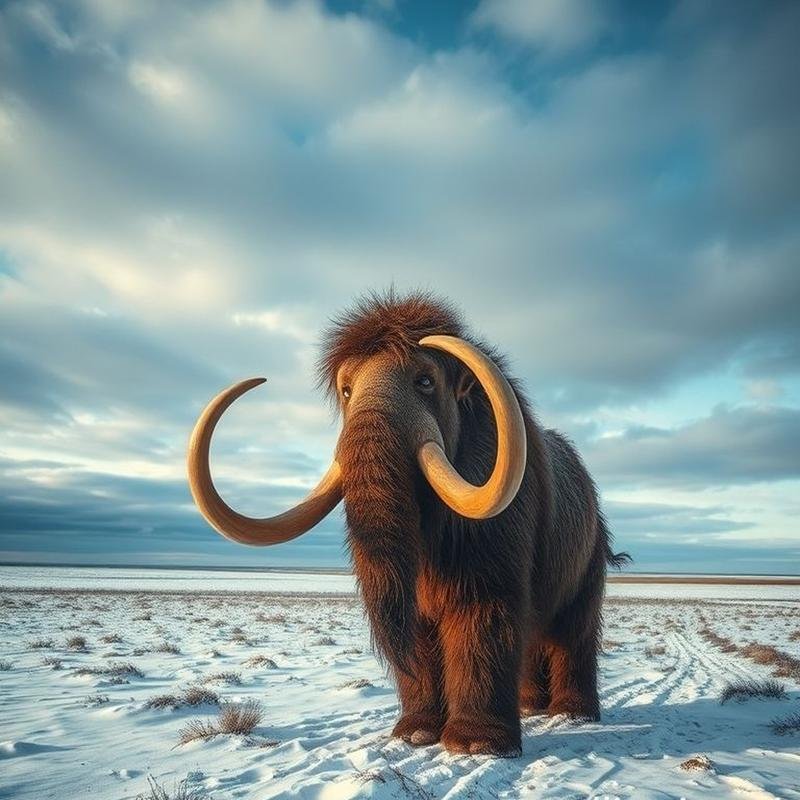Resurrecting the Dead: Playing God? 🧬🤯 (Bioengineering and De-extinction)

De-extinction: Bioengineering, Ethics & the Future
Could the de-extinction of species be considered a transgression? This question resonates through both ancient mythology and contemporary bioengineering laboratories. Here, scientists are endeavoring to resurrect animals that disappeared due to human actions, aiming to rectify the damage inflicted. However, what if this very act of restoration constitutes a greater error? What if we unleash forces beyond our comprehension and control, thereby jeopardizing the delicate equilibrium of our world? Are we on the precipice of assuming a divine role, or are we merely reiterating past mistakes with more sophisticated technology? Envision a world where the woolly mammoth once again roams the earth. But upon which earth will it tread? Will this earth possess the capacity to sustain it? And are we prepared to accept the ramifications of this audacious genetic intervention? This is a journey into the depths of science and ethics, where the central question is not “Can we?”, but rather, “Should we?”.
Share your initial thoughts in the comments section. To remain informed about the compelling facts we will be revealing, please subscribe to the channel.
Bioengineering and the Past
Bioengineering provides a compelling perspective on the past. Imagine the capacity to decode the DNA of animals that became extinct millennia ago, and to leverage this knowledge to restore them to life. Thanks to the revolutionary CRISPR technology, this aspiration is beginning to materialize into a tangible reality. CRISPR, often referred to as “genetic scissors,” is a tool that empowers scientists to edit DNA with remarkable precision, akin to modifying a single character within an extensive text. This technology has paved the way for the ambitious Woolly Mammoth Revival project, an initiative focused on reintroducing the majestic woolly mammoth to the Siberian steppes. The concept is straightforward: extract ancient DNA from preserved mammoth remains, then utilize CRISPR to insert the mammoth’s distinctive genes into the DNA of the modern Asian elephant, its closest extant relative. The critical role of induced pluripotent stem cells is paramount. This technology enables the conversion of specialized adult cells into pluripotent stem cells, capable of differentiating into any cell type within the body.
Challenges and Considerations
However, can we truly reverse time? The challenges extend beyond simply assembling fragmented DNA sequences. Consider, even if we successfully clone a woolly mammoth, where will it find its habitat? The glacial plains it once inhabited have vanished or undergone radical transformation. Identifying a surrogate mother presents another challenge. The Asian elephant carries a fetus of a fundamentally different genetic makeup. Can its uterus support a genetically engineered embryo designed to withstand extreme cold? And if we succeed, will the young mammoth be able to adapt to a world drastically altered from its original environment? Even animals that are currently relocated to environments resembling their original habitats face significant difficulties. Genetic challenges also loom large. Ancient DNA is often degraded, and genetic diversity is severely limited. Will we create weakened clones, vulnerable to disease? And are we prepared to bear the ethical responsibility of introducing these creatures into a world where they may not be able to thrive?
Environmental Implications
What are the environmental implications? Are we prepared to confront the potential consequences of resurrecting extinct organisms? A study published in the journal *Nature Ecology & Evolution* revealed that reviving a single animal could disrupt local food webs and lead to the extinction of other species. Imagine a predator suddenly reappearing, or a herbivore consuming rare plants that were on the verge of extinction. Is our current environment capable of absorbing such radical changes? In 2019, the International Union for Conservation of Nature (IUCN) issued a warning, stating that any species revival project must undergo rigorous environmental risk assessments prior to implementation. In 2015, scientists announced the discovery of frozen viruses, trapped within the carcasses of extinct animals found deep within the Siberian permafrost. This discovery raised legitimate concerns about the potential release of ancient pathogens into contemporary environments. Are we prepared to face a biological threat we have never encountered before? A threat that may exceed our capacity to control it.
Ethics and Responsibility
Now, let us address a more complex area: ethics and responsibility. In 2013, we witnessed the brief re-emergence of the gastric-brooding frog, but its existence was short-lived, raising a fundamental question: what do we truly consider resurrection? Is it merely the restoration of DNA, or the restoration of life in all its complexity and intricate interactions? Environmental philosopher Bill McKibben argues that we may inadvertently create a perpetual zoo, where these creatures exist in harsh and unnatural conditions, trapped in the past. Ethicist Ronald Dworkin, for his part, emphasizes the inherent rights of every living being, prompting us to ask: do we have the right to intervene so profoundly in the course of nature, manipulating the very fabric of life? Even public opinion is divided on this complex issue. In a 2015 poll, a significant percentage supported de-extinction, but with fundamental reservations regarding the potential environmental risks.
The Future of De-extinction
Are we on the cusp of a new era, or are we opening a Pandora’s box that we may be unable to close? The story of Celia, the Pyrenean ibex cloned in 2003 who lived for a mere seven minutes, serves as a reminder of the immense technical and ethical challenges we face. And while teams like Colossal Biosciences are racing to revive the woolly mammoth with advanced CRISPR technologies, at a cost that could exceed $40 million, the question remains: are these the priorities we should be pursuing? Biologist Stewart Brand views this work as a promising form of environmental remediation, but cautions against considering it a substitute for preserving existing biodiversity, an invaluable treasure. Let us remember the poignant words of Françoise Baylis: our responsibility is significant towards future generations and the environment they will inherit.
Conclusion
Ultimately, the de-extinction of species presents a complex ethical and scientific dilemma. While we possess the requisite technical tools, we must ask ourselves whether we possess the wisdom to utilize them responsibly. The future of biodiversity on our planet hinges on our decisions today. Will we choose to be guardians of life, or will we become destructive forces that threaten the delicate balance that governs our world?
Having reviewed the ethical and practical challenges of resurrecting extinct species through bioengineering, focusing on the potential unintended consequences for existing ecosystems and the philosophical implications of assuming a divine role, what is your perspective on this issue? Do you believe the potential benefits outweigh the risks, or should we exercise greater caution in our intervention in nature? Share your thoughts in the comments section.










